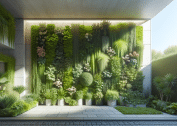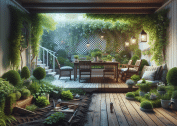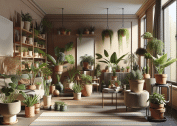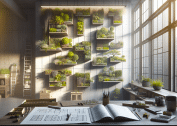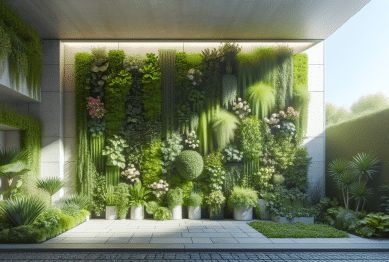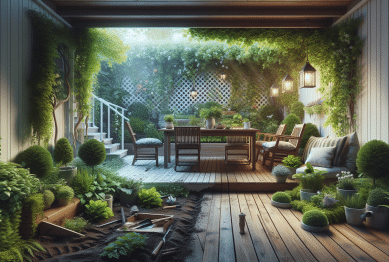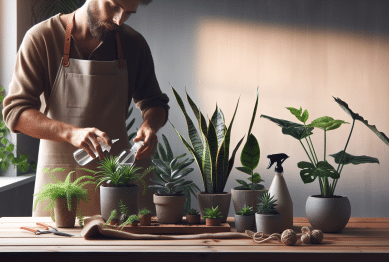Small homes are no longer seen as a compromise—they’re becoming a design opportunity. Rising urban density, higher housing costs, and growing interest in sustainable living have sparked an evolution in how people think about compact interiors. The latest movement, smart small space design, blends adaptable furniture, intelligent storage, and AI-driven personalization to make limited homes feel larger, more functional, and better suited to modern lifestyles.
From track shelving that doubles as a design statement to AI-powered climate and lighting systems that respond to your habits, the 2025 approach isn’t just about squeezing more in—it’s about making every square meter work smarter.
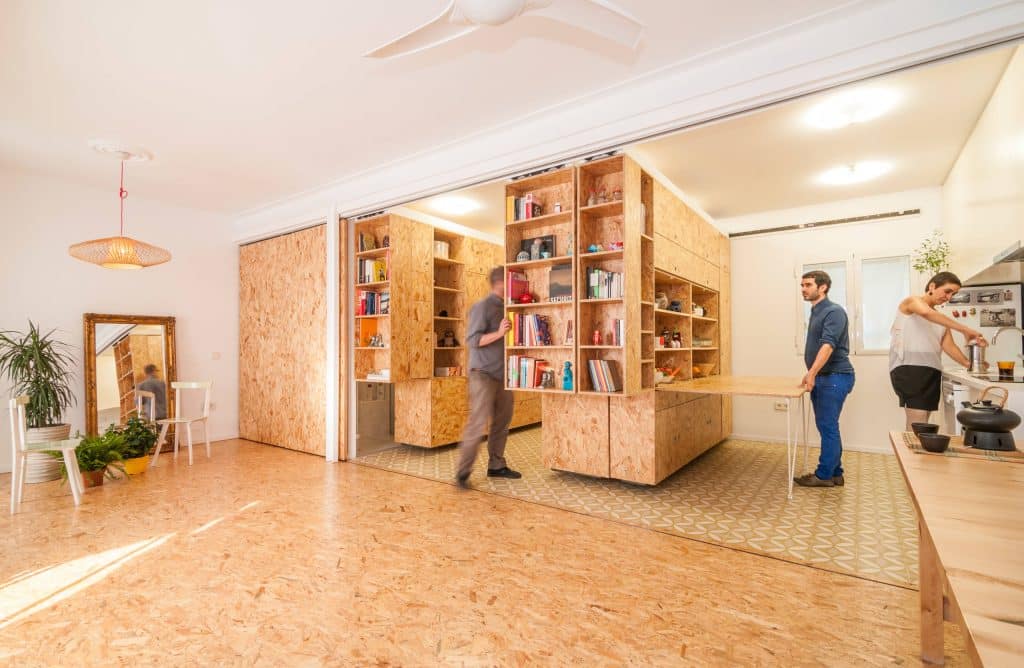
Why Smart Small Space Design Is Becoming Essential
Urban centers are growing denser, and the average size of new apartments in major cities has been shrinking for over a decade. In some areas, especially in Asia and parts of Europe, micro-apartments under 30 square meters are becoming standard. But rather than letting size limit lifestyle, homeowners and renters are adopting technology, design strategy, and multi-purpose elements to get more from less.
Three major forces are fueling the popularity of smart small space design in 2025:
- Economic pressure – Smaller homes are more affordable to buy, rent, and maintain.
- Sustainability goals – Compact living reduces energy consumption and environmental footprint.
- Design innovation – Advances in modular furniture, AI integration, and creative storage make small spaces not just livable, but desirable.
Trend 1: Track Shelving as Functional Architecture
A Wall Solution with Style
One of 2025’s most talked-about storage trends is track shelving—adjustable wall-mounted systems that combine flexibility with a custom look.
Instead of heavy bookcases or fixed cabinets, track shelving uses vertical wall tracks that support movable shelves, cabinets, or even desks. This system makes it possible to rearrange layouts as needs change, whether it’s adding more shelving for books or swapping in a desk for remote work.
Benefits in Small Homes:
- Adaptability – Rearrange without buying new furniture.
- Space efficiency – Use full wall height for storage.
- Aesthetics – Mix materials like wood, glass, and metal for a designer finish.
Styling Tips
- Use odd-number groupings for displayed objects to create visual rhythm.
- Combine open shelves for décor with closed units for hidden storage.
- Keep at least 30% negative space to prevent a cluttered look.
Trend 2: Biophilic Design Meets Limited Space
Bringing nature indoors is more than a passing fad—it’s a wellness-driven choice. Studies have shown that indoor greenery can improve air quality, reduce stress, and boost mood. For small spaces, the 2025 version of biophilic design focuses on vertical integration and multi-functional greenery.
Space-Saving Biophilic Strategies:
- Wall-mounted planters – Turn blank walls into green features.
- Shelf plants – Integrate greenery into track shelving systems.
- Herb gardens in the kitchen – Fresh, functional, and aromatic.
Pairing biophilic elements with smart small space design also means incorporating natural light management—such as AI-controlled blinds that adjust to optimize plant health and human comfort.
Trend 3: AI-Enhanced Home Adaptation
The leap in smart home technology is transforming small space living from static to dynamic. Instead of fixed layouts and manual controls, AI is enabling homes to learn and adapt.
Recent research shows AI systems can monitor occupant behavior, adjust environmental conditions, and even recommend furniture arrangement changes for optimal space usage.
Examples of AI in Smart Small Space Design:
- Climate control – Adjusts temperature and humidity for comfort and energy savings.
- Lighting automation – Changes brightness and color temperature to match time of day and activity.
- Layout recommendations – Suggests moving furniture for better flow or to accommodate new needs.
Trend 4: Multi-Functional Furniture That Disappears
One of the cornerstones of smart small space design is furniture that serves more than one purpose—or can vanish when not needed.
Popular 2025 examples include:
- Murphy beds with built-in desks – Sleeping and working in the same footprint.
- Dining tables that fold into the wall – Open floor space during the day.
- Storage ottomans – Seating and storage combined.
According to, using multi-functional furniture in combination with vertical storage can make even a 20 square meter studio feel spacious.
Trend 5: Vertical Thinking
When floor space is limited, walls and ceilings become critical. Vertical design is about making use of underutilized space above eye level for both storage and aesthetic purposes.
Ideas include:
- Over-door shelving for seasonal items.
- Hanging racks for kitchen tools.
- Lofted sleeping areas with workspace or storage underneath.
This method frees up central floor space, improving both movement flow and the perception of openness.
How to Implement Smart Small Space Design at Home
Step 1: Audit Your Space
Before buying anything, map your room dimensions and list your daily activities. Knowing exactly what your space needs to support will help avoid unnecessary purchases.
Step 2: Prioritize Flexible Systems
Choose track shelving or modular furniture that can evolve with your lifestyle.
Step 3: Integrate Technology Thoughtfully
Avoid overloading your home with visible gadgets. Opt for integrated smart systems that disappear into the design.
Step 4: Keep Décor Minimal but Impactful
Select a few bold or meaningful pieces rather than many small items. This avoids visual clutter and maintains a sense of calm.
Example: A 25 Square Meter Studio Transformation
Let’s visualize how all these trends can come together:
- Wall 1: Track Shelving System
Hosts books, plants, and a fold-down desk for work hours. - Wall 2: Murphy Bed
Converts into a sofa during the day, revealing open space for exercise or entertaining. - Ceiling Area: Hanging Storage
Holds seasonal clothing in decorative baskets. - Biophilic Element
A vertical herb garden in the kitchen area, kept healthy with automated grow lights. - AI Integration
Controls lighting to shift from bright white for work to warm tones for evening relaxation.
Checklist: Smart Small Space Design Essentials
| Category | Example Solutions |
|---|---|
| Storage | Track shelving, under-bed drawers |
| Furniture | Fold-out desks, Murphy beds, storage benches |
| Nature Integration | Wall planters, vertical gardens |
| Technology | AI-controlled lighting, climate systems |
| Vertical Use | Loft beds, over-door shelving |
| Style | Minimalist with intentional focal points |
The Psychology of Space
Even without adding square footage, design can alter the perception of space. Light colors, reflective surfaces, and continuous flooring help rooms feel larger. Consistency in materials and colors across zones prevents visual fragmentation.
Smart small space design takes this a step further by aligning perception with function—ensuring the space not only looks bigger but works better.
Sustainability Benefits
Smaller, smarter homes naturally consume less energy. Integrating efficient lighting, AI climate control, and sustainable materials aligns personal living choices with global climate goals. According to the, compact, energy-efficient homes can reduce household emissions by up to 30%.
Final Thoughts
Smart small space design is more than a trend—it’s a shift in how we view living environments. By blending adaptable storage like track shelving, biophilic elements, AI-driven automation, and multi-functional furniture, even the most compact homes can become highly functional, visually appealing, and wellness-supportive.
This isn’t about compromise; it’s about precision. Every design choice serves multiple purposes, every technology is intentional, and every square meter is valued. As cities grow and sustainability becomes more urgent, the homes of the future will not necessarily be bigger—but they will certainly be smarter.
References
- House Beautiful. (2025). Why Track Shelving Is the Small Space Trend of the Year. Available at: https://www.housebeautiful.com (Accessed: 15 August 2025).
- Decorilla. (2025). Interior Design Trends to Watch in 2025. Available at: https://www.decorilla.com
(Accessed: 15 August 2025). - Homefront Build. (2024). 2025 Home Design Trends. Available at: https://www.homefrontbuild.com
(Accessed: 15 August 2025).


